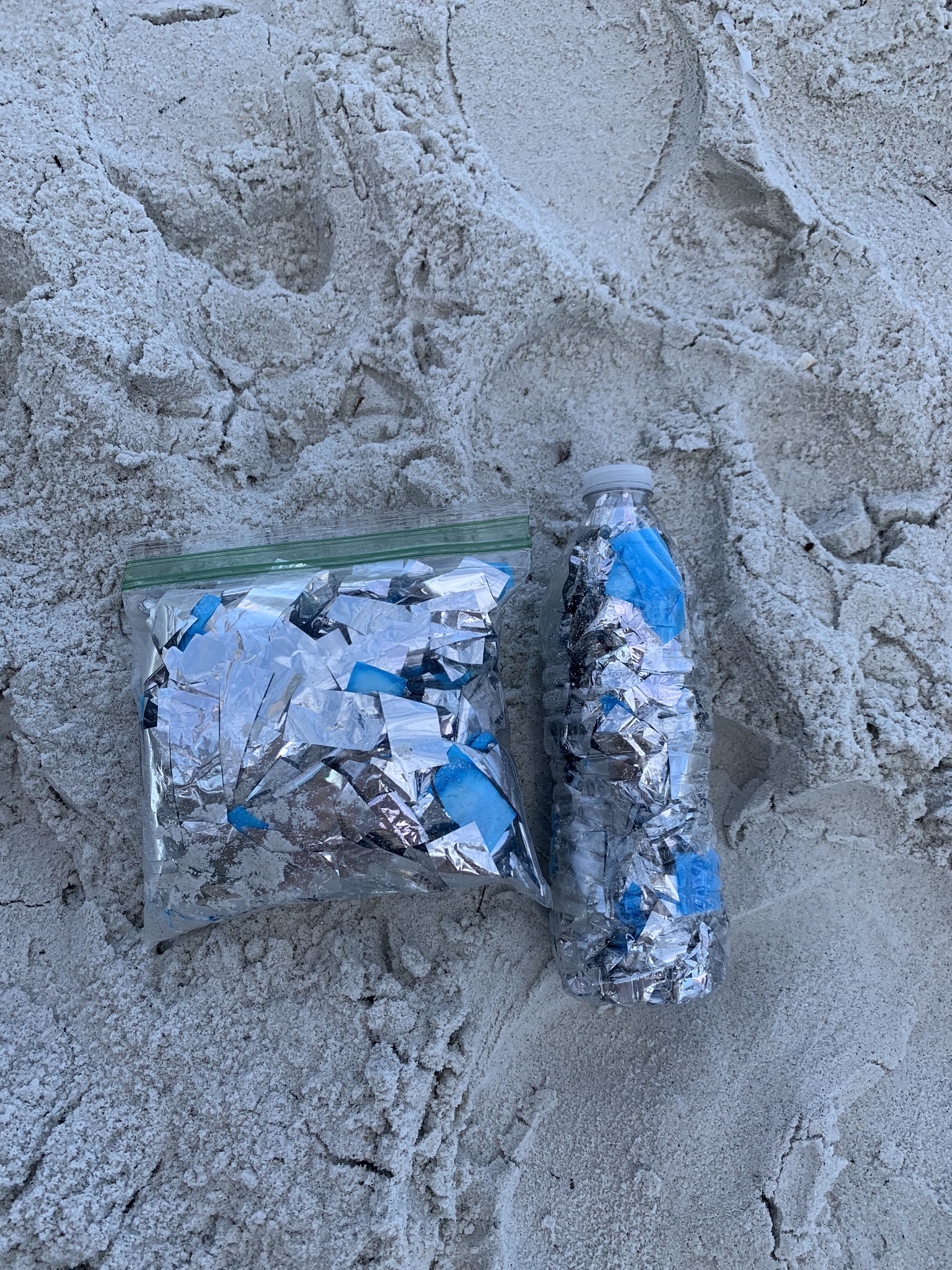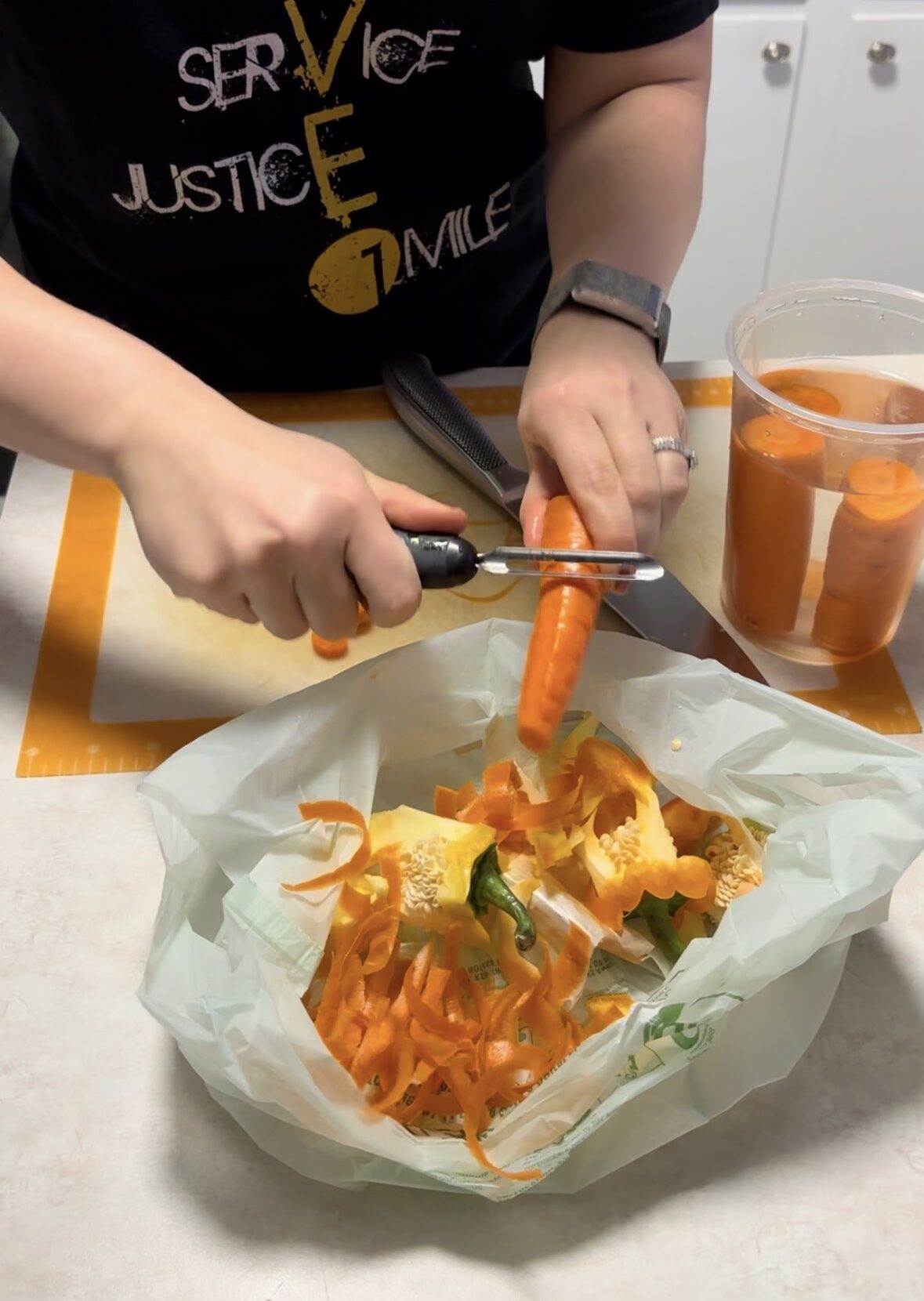What are microplastics?
I’m assuming most of us have heard the staggering statistic that by 2050 there will be more plastic than fish in the oceans. 2050 is fast approaching, so let’s dive into discussing microplastics, which affect all of our waterways. How small are microplastics? Microplastics are plastic particles with a length less than 5 mm and greater than 1 um (1 micron, or 0.001 mm). For reference, 5 mm is about the size of a sesame seed. A typical household dust particle is around 40 microns. This means microplastics can be so small that we can’t even see them with the naked eye. Microplastics are more common, but there are also nanoplastics. Nanoplastics are plastic particles even smaller than microplastics (less than 1 micron).
To understand the sources of microplastics, we have to look at two different categories – primary and secondary. Primary microplastics are intentionally produced as microplastics. One example of a primary microplastic is a small plastic bead that is produced and added to a face scrub or body wash as an exfoliant. Secondary microplastics start as larger pieces of plastic and degrade or break down over time to create microplastic particles. An example of a secondary microplastic is a plastic bucket used for sandcastles that gets left on the beach. If the bucket gets swept into the ocean, the sun, salinity of the ocean water, and abrasiveness of the sand will cause the bucket to break down over time into smaller and smaller pieces until it reaches the size threshold to be called a microplastic.
What we know about microplastics so far…
One caveat that’s important to understand before getting into the details is that microplastics are new. The research is only beginning and it’s not easy to understand yet. The first plastic was invented a little over 100 years ago. There are many different types of plastic in circulation. The scientific community is still learning the pros and cons of each type, and they are still inventing new types of plastic as well.
What we know for sure is that microplastics are present in soil and waterways, animals, and humans. What can make the findings a little bit confusing is that there are no standard research protocols yet. So when reading research about microplastics it’s important to note that research studies are almost certainly collecting samples differently, counting the number of microplastics differently, and potentially using different definitions in their research. There are still some general principles and findings that we can discuss. There are also actions that we can take to address the looming microplastic problem even though we may not have all the pertinent or concrete information yet. Let’s dig into the primary effects of microplastics that are concerning.
Microplastics: the physical concern
The physical concern about microplastics is related to the potential for a piece of plastic (or, really, multiple pieces of plastic) to build up in an animal or a human over time. Plastic is foreign to human and animal bodies. We may not have the right processes to figure out how to excrete it from our bodies if we ingest or inhale it. This article specifically discusses the dangers of the physical aspect of microplastics.
The physical aspect primarily affects small marine animals. This is due to their small size and the fact that microplastics can look like food to them. Because of the animal’s small size, microplastics can cause blockages and abrasions in the digestive tract of animals. Depending on how many microplastics are consumed, it can ultimately lead to starvation for the animals if they are not able to get rid of the particles.
Other damages observed are a reduction in reproductive activity and reduction in ability to avoid predators. Since microplastics are small, it’s typically smaller animals that are most affected. However, you can see this leads to plastic in the food chain as larger animals are consuming smaller animals, so the microplastic contamination continues to transfer to larger and larger animals over time. It’s difficult to know the full impact this would have on human health and the environment. Since it’s a newer area of research, there’s still a lot to learn. Further evidence is needed to understand the full potential impact.
Microplastics: the chemical concern
The chemical concern about microplastics is related to the impact of the chemicals within or adhered to the microplastic particles.
Starting with the chemicals within microplastics. The word microplastic is a generic term for a small piece of plastic without disclosing the type of plastic. Some common types of plastic (and thus types of microplastics) are polyvinylchloride [PVC], polyamide [PA], polyethylene terephthalate [PET], high density polyethylene [HDPE], and polyurethane [PUR]. To make these plastics more useful for their applications, they usually contain additives like plasticizers, flame retardants, or stabilizers. Additives typically do not incorporate into the polymer backbone. This means when a piece of plastic with additives is in water or in an animal or human’s body, these additives are more likely to leach out of the plastic and into whatever is surrounding it (i.e. transfer from the plastic to the surrounding media). Some plastic additives are harmful to humans, like phthalates. Other additives may not be proven to be harmful. Even if they are not proven to be harmful it’s likely they are not optimal for our health and well-being.
Next, looking at contaminants adhered to the surface of plastic particles. These typically come from contaminants already existing in waterways from other pollutants that are hydrophobic (i.e. they don’t like water). If a contaminant is hydrophobic, it will want to move away from water. Thus it attracts and “hangs on” to microplastics. This means when an animal ingests a microplastic, it’s not just the piece of plastic itself but it also could contain a significantly higher concentration of other hydrophobic contaminants.
This article demonstrates that hydrophobic contaminants like polychlorinated biphenyls (PCBs), organic pollutants (pesticides), and heavy metals adsorb to plastic particles. Another article echoes the PCB and organic pollutant adsorption capability of plastic and also includes nonylphenols and dioxin as a concern. I wasn’t able to find a ton of research on this topic but one study says “Browne et al. (2013) found that plastic and contaminants harm the physiological functions of marine sedimentary organisms. They saw the desorption of contaminants directly from the plastic in the gut, as well as from sand. This could lead to not only organismal level effects but population level effects and changes in ecosystem dynamics.” This might have very serious harmful effects and needs to be researched in more detail.
Microplastics: the biological concern
Lastly the biological concern. This is the impact of microbes or bacteria adhering to the surface of microplastics and being absorbed along with the ingestion of a microplastic. This report from the World Health Organization states that microorganisms or bacteria that form biofilms tend to attach to “hydrophobic nonpolar surfaces, such as plastics, [rather than] hydrophilic surfaces.” There are not many studies available, but the limited data in the linked report suggests that “microplastics could enable the long-distance transport of pathogens and increase the transfer of antimicrobial resistant genes between microorganisms.”
The top microplastic… plastic fibers
All of this information seems convincingly gloomy, so what can we do? This study that quantified microplastics on various US National Park beaches found that 97% of microplastics in these areas were fibers, which is very significant! Remember there are no standard research protocols yet. The exact numbers may not be replicable through another study by another group. However, the general trend indicating significant quantities of microplastic fibers is likely to be true. We know that most clothing is produced out of synthetic fibers today and fashion trends are constantly changing leading to a lot of clothing disposal. To combat this, there’s a few things we can do:
- Stop buying so many clothes! I know it’s tempting to want to keep up on every micro-fashion trend, especially with the large number of fashion influencers on social media today. The fewer cheap, synthetic (plastic) clothing we purchase, the fewer microplastics in our waterways. There are a lot of other challenges with fast fashion and the textile industry that are too detailed to discuss here, but are equally important and further reasons to avoid purchasing large quantities of cheap synthetic clothing.
- If you really decide that you need to purchase a new item of clothing, try to avoid synthetic clothing. Synthetic clothing includes polyester, nylon, “fleece”, spandex, etc. Choose companies that are certified by the Global Organic Textile Standard (GOTS) like Pact and Toad & Co. Another company, prAna, blends recycled content with organic cotton and hemp.
- For the synthetic clothing you already own, try to make your clothing last longer between washes. The process of washing synthetic clothes in a washing machine releases up to 700,000 microfibers in one cycle.
- When you do wash your synthetic clothing, there are a few options you can use to minimize the impact of microfibers. Yes, I own synthetic clothing and no, I don’t have any of these options currently. It’s on the list of future sustainable changes. We can’t do everything, but small changes over time can make a large impact.
- You can buy a guppyfriend washing bag. This bag stops microfibers at the source (testing suggests 80-85%) and captures them if they are released. You can learn more about their technology on their website.
- You can buy a Cora ball to toss in with your laundry which captures about 30% of microfibers.
- You can install a filter like the Lint LUV-R filter. This filter captures 65% of microfibers initially, but captures 100% microfibers at saturation.
- If your synthetic clothing is no longer serving you, consider buying a “Take Back Bag” from For Days and recycle your clothing. You can send them any type of clothing even if it’s ripped or stained. They’ll coordinate the recycling part and you’ll get a $20 voucher to put towards any clothing item from their shop. I collected clothes that were ripped, stained, too stretched out – any clothing that no one else would want – for years. I finally ordered a Take Back Bag and shipped in my old clothes for recycling. I’m a big fan of making clothes last as long as possible. Recycling fabric is great, but it takes a lot of energy. We can’t use recycling as a “solution” to fast fashion. It doesn’t solve the problem of overconsumption in the first place. Please use the Take Back Bag responsibly!
What about other microplastics?
Fibers are the highest percentage of microplastics according to the study above, but that doesn’t mean we shouldn’t make any changes related to other types of microplastics. Here are some other ideas for how to avoid microplastics.
- Avoid single use plastic if you can (water bottles, silverware, food packaging, soap or shampoo bottles, etc.). Single use plastic is designed to be used once and thrown away. After you throw it in a garbage can you likely won’t think about it again. However, transportation from the original garbage can to the final landfill destination provides plenty of opportunities for pieces of trash to escape and get into sewers, creeks, beaches, etc. If you avoid using single use plastic, you’re preventing this from happening!
- Make sure you dispose of trash properly (recycling or waste) – particularly when out in public. The same reasoning applies here as point #1.
- Avoid situations that create microplastics that are easy for you or someone in your family to ingest. For instance, if you use a plastic cutting board I’m sure you have a lot of divots in the cutting board from your knife. If you run your finger over them you can feel the roughness from where a small piece of plastic was removed. This plastic is likely going into whatever food you’re preparing. Another example is if you have a flimsy plastic takeout container and you’re cutting up food in it to eat. Similar story, likely some small plastic particles will be removed from the container and will end up in the food. Full disclosure, we only have plastic cutting boards. They are on our future replacement list, but it’s about limiting your exposure, not completely preventing it. Remember that microplastics are pervasive and some are so small that you can’t see them. It’s impossible to prevent all exposure, but we can make gradual changes to improve this over time.
- Be aware of your surroundings. There are many more examples than this, but if you’re going to do a gender reveal on the windy beach, can you use something other than confetti? I speak from experience that cleaning up confetti after someone else’s irresponsibility is not the most fun way to spend a day on the beach.
- Participate in trash cleanup, whether that’s picking up trash on the beach, in your yard, in the park, etc. Keep a pair of gloves in the car if that helps. If you live near a waterway, there’s likely a local organization that will organize various clean-up days. Can you and your family or friends participate in one to give back? Remember that it’s much easier to grab an intact plastic water bottle than 1 million 5mm pieces after it’s degraded and broken down.
- Encourage friends and family to make changes in plastic consumption. We all won’t be perfect but we can all be a little bit better.
SOURCES:
- https://apps.who.int/iris/bitstream/handle/10665/326499/9789241516198-eng.pdf?ua=1
- https://www.ncbi.nlm.nih.gov/pmc/articles/PMC7068600/#B146-ijerph-17-01212
- https://repository.library.noaa.gov/view/noaa/10296/noaa_10296_DS1.pdf
- https://marinedebris.noaa.gov/microplastics/quantification-microplastics-national-park-beaches
- https://www.ncbi.nlm.nih.gov/pmc/articles/PMC7927104/
- https://www.fashionrevolution.org/our-clothes-shed-microfibres-heres-what-we-can-do/
- https://www.clearstream.ca/micron-size-comparison-chart









